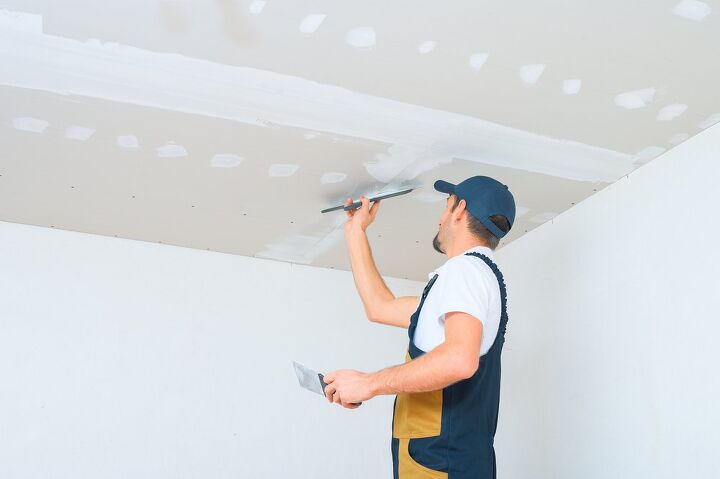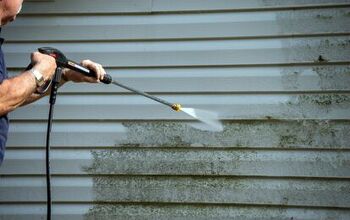How Long Does Drywall Last In A House?

You’re bound to find drywall in most houses, from the walls to the ceilings. It can be easy to take your walls for granted, assuming they’ll last forever, but could they start to weaken? Exactly how long does drywall last in a house?
Drywall can last for 70 years, but issues like termites, excessive moisture, and other damage can shorten its lifespan. In unfavorable conditions, drywall could last for only 30 years. You can repair drywall or replace it in sections if necessary. Therefore, it’s unlikely you would have to redo all of the drywall in your home during your lifetime.
If you’re a homeowner, you probably already know home repairs can be costly and time-consuming. But knowing what to expect regarding various materials, like drywall, can help you plan better for future fixes and renovations.
What Is the Life Expectancy of Drywall?
Interior drywall (wallboard, sheetrock) lasts for a long time, up to 70 years, maybe even more, in ideal conditions. Thanks to its long lifespan, it’s unlikely you would need to worry about replacing all of the sheetrock. However, it could wear out much sooner if you have unfavorable conditions in your home.
If conditions are less than ideal, you might see a significant decrease in drywall’s lifespan. In certain situations, such as a perpetually leaky roof, the walls and your ceilings might bite the dust after just 30 years. This shortened lifespan doesn’t account for any incidental damage that might occur (like knocking a hole in the wall).
Things That Shorten Drywall’s Lifespan
Several things can shorten the lifespan of drywall in your house. One of the most significant factors is moisture exposure. Of course, a little moisture is fine; drywall does have some water resistance.
Plus, you’ve likely applied texture, a couple of coats of paint, or plaster to finish your ceilings and walls. Therefore, these extra layers provide some protection from a splash of water or slight moisture.
But at its core, wallboard consists of gypsum in between paper, which is absorbent. And the backside doesn’t have a protective layer like the texture and paint you put on the front side.
Therefore, consistent exposure to a moist environment or a lot of moisture at once (like a flood) could ruin your drywall.
Another major problem is termites, which can damage your home’s entire structure. Termites like to snack on the paper in drywall. You might notice small pinholes in your walls or tubelike forms on your ceilings.
Finally, excessive wear and tear can shorten drywall’s lifespan. Over time, if your wall gets too many dents, holes, etc., you might prefer to replace the drywall. You can only repair things so much before it’s still noticeable or comprises the product’s integrity.
When Should You Replace Drywall?
Luckily, you can get drywall in sections. Therefore, if you notice damage from wear and tear, termites, or moisture, you might only need to replace certain parts.
It would be rare to replace all the drywall in your house. The exception would be a catastrophic event like a home flood or extensive termite damage throughout your home.
You should replace your drywall whenever there’s a hole greater than five inches or multiple holes. Also, if mold or mildew overtakes it, it needs to go. But, most often, you still just need to replace the damaged section, not all of your sheetrock.
If you’ve repeatedly repaired a section, it might no longer look aesthetically pleasing. In this latter case, you might decide to replace it for design purposes.
Is It Worth It to Replace Drywall? Or Can You Repair It?
It’s always best to try and repair drywall first; it’s less time-consuming and much less expensive. You will only need to replace all your sheetrock if the damage is extensive and severe throughout your home.
Patching wallboard is the most common way to fix problems with it. However, this is because most issues tend to be small, like a tiny hole, dent, or other minor damage. You can usually handle these issues with a bit of spackle and paint.
If the hole is larger but under five inches, you can also simply do a patch job. Typically, you’ll use special tape or a patch over the hole, some joint compound, then paint. You can purchase drywall repair kits that are perfect for this purpose.
If the hole is larger than five inches or there’s more extensive damage to a section, you can replace the section. There are several ways to do this.
You can cut a piece of sheetrock slightly bigger than the damaged section. Then replace it using joint compound, tape, and the appropriate tools. The video below from Lowe’s Home Improvement walks you through how to go about several different types of drywall repairs.
Explainer Video: How to Repair Drywall
Tips for Extending Drywall’s Lifespan
To ensure your drywall lasts as long as possible, keep these things in mind:
- Install mold-resistant drywall in areas more prone to moisture.
- If there is any damage, repair the compromised section immediately. If left unaddressed, the damage can get worse over time.
- Assess your home’s walls and ceilings regularly as part of your regular maintenance. Keep an eye out for potential water spots, creasing, stains, cracks, etc. Finding a problem early is the best way to prevent it from worsening.
How Long Does Drywall Mud Last After Opening?
Drywall mud, or wallboard joint compound, lasts approximately nine months once it’s open. But this is only if you keep it in an airtight container. Under ideal conditions, it could last longer, but it could also dry out a lot sooner.
Every manufacturer has different product expiration dates, so pay attention to the label. It’s best to use the product within its expected shelf life. Using old or compromised drywall mud can lead to a shoddy job.
Wrapping Up
In the right conditions, drywall can last for 70 years, maybe more. However, if conditions are unfavorable, it could reach the end of its lifespan much faster, about 30 years. For example, areas with excessive moisture, termite damage, or lots of wear and tear might mean you’re replacing sheetrock a lot sooner.
Fortunately, you usually only need to replace certain sections based on where the damage is. But if the damage is extensive or throughout your home, you might need to replace all the drywall (though this is rare). Most times, you can handle small holes, dents, and other minor issues with a simple patch job.

Stacy Randall is a wife, mother, and freelance writer from NOLA that has always had a love for DIY projects, home organization, and making spaces beautiful. Together with her husband, she has been spending the last several years lovingly renovating her grandparent's former home, making it their own and learning a lot about life along the way.
More by Stacy Randall



























